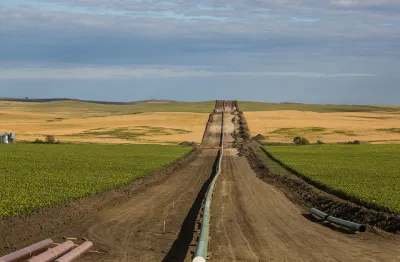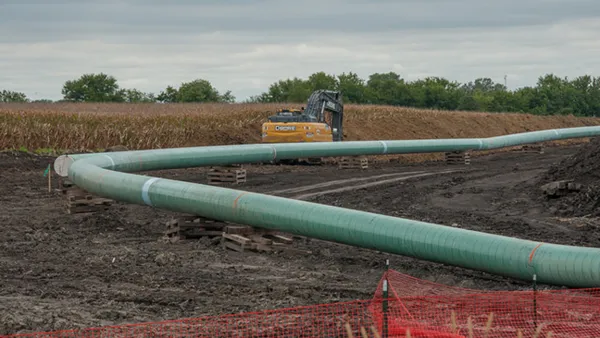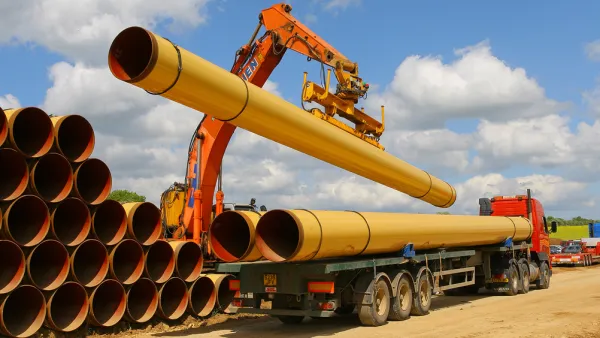Thursday's massive oil spill in South Dakota is not a good omen for TransCanada for a favorable decision on Monday on an application before the Nebraska Public Service Commission on the routing of the controversial Keystone XL pipeline.


Courtesy: Wikipedia – Keystone Pipeline Route
|
on
similar spill in the 36-inch Keystone XL pipeline, which has an 830,000 barrels-per-day capacity, would result in a much greater spill. Opponents of the Keystone XL expressed their outrage on Thursday.
"A decision by the [Public Service Commission] in favor of the pipeline doesn’t mean the project would definitely move forward," reports Paul Hammel for the Omaha World-Herald Bureau.
Opponents, including Bold Nebraska and the Sierra Club, have vowed to file lawsuits challenging the use of eminent domain by a foreign corporation to obtain right of way for the pipeline.
However, market conditions could also cause TransCanada to refrain from construction, adds Hammel.
Record-low prices for crude oil have cast doubt on whether the more expensive Canadian crude is needed. Tar sands oil is expensive to produce, and some major players have pulled out of that region because of a glut of cheaper and more easily accessed sources of oil.
Unlike the original Keystone pipeline, XL would also carry Bakken shale oil from North Dakota, also an unconventional oil but not as expensive to produce as bitumen from oil sands in Alberta.
Hat tip to Christine Elwell.
FULL STORY: Keystone pipeline spills 210,000 gallons of oil on eve of permitting decision for TransCanada

National Parks Layoffs Will Cause Communities to Lose Billions
Thousands of essential park workers were laid off this week, just before the busy spring break season.

Retro-silient?: America’s First “Eco-burb,” The Woodlands Turns 50
A master-planned community north of Houston offers lessons on green infrastructure and resilient design, but falls short of its founder’s lofty affordability and walkability goals.

Delivering for America Plan Will Downgrade Mail Service in at Least 49.5 Percent of Zip Codes
Republican and Democrat lawmakers criticize the plan for its disproportionate negative impact on rural communities.

Test News Post 1
This is a summary

Test News Headline 46
Test for the image on the front page.

Balancing Bombs and Butterflies: How the National Guard Protects a Rare Species
The National Guard at Fort Indiantown Gap uses GIS technology and land management strategies to balance military training with conservation efforts, ensuring the survival of the rare eastern regal fritillary butterfly.
Urban Design for Planners 1: Software Tools
This six-course series explores essential urban design concepts using open source software and equips planners with the tools they need to participate fully in the urban design process.
Planning for Universal Design
Learn the tools for implementing Universal Design in planning regulations.
EMC Planning Group, Inc.
Planetizen
Planetizen
Mpact (formerly Rail~Volution)
Great Falls Development Authority, Inc.
HUDs Office of Policy Development and Research
NYU Wagner Graduate School of Public Service




























